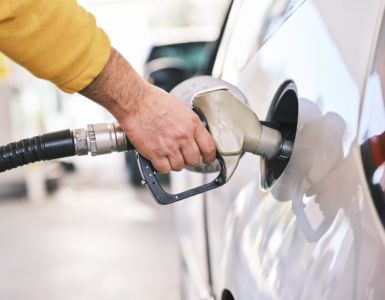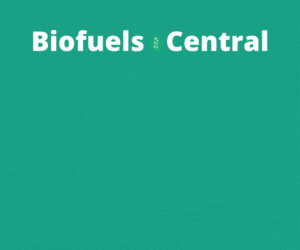EIA – Agricultural trends and renewable fuels targets drive ethanol and biomass based diesel prices.
Based on weekly estimates in our Weekly Petroleum Status Report (WPSR), U.S. gasoline consumption during the second quarter of 2022 and into the beginning of July remains lower than 2021 levels.
This pattern continues the monthly trend confirmed in our latest Petroleum Supply Monthly (PSM), which showed that gasoline consumption (measured as product supplied) was 8.8 million barrels per day (b/d) in the United States during April 2022, 0.4% less than in April 2021.
Although U.S. gasoline consumption has not completely returned to pre-pandemic levels, it generally increased from mid-2020 through the first quarter of 2022. April was the first month this trend reversed.
🔥 What about we co-host a webinar? Let's educate, captivate, and convert the biofuels economy!
Biofuels Central is the global go-to online magazine for the biofuel market, we can help you host impactful webinars that become a global reference on your topic and are an evergreen source of leads. Click here to request more details
The largest factors contributing to changes in gasoline consumption are changes in travel, which we measure in vehicle miles traveled (VMT), non-farm employment, vehicle efficiency, and gasoline prices.
Typically, increases in travel and non-farm employment contribute to increases in gasoline consumption, whereas improvements in vehicle efficiency and higher gasoline prices contribute to decreases in gasoline consumption.
According to WPSR, U.S. gasoline consumption during the period starting with the first week in April through the first week in July averaged 8.9 million b/d, or 0.2 million b/d (3%) less than the same period in 2021 (Figure 1).
Excluding the pandemic year of 2020, this would be the least second quarter U.S. gasoline consumption since 2001, assuming that the PSM confirms the weekly data.
The latest available data through April show that total VMT increased 1.5% compared with April 2021, though a slight decline in weekly consumption suggests that there may have been less driving activity during May and June.
Another factor, such as increased vehicle efficiency, must have led to less gasoline consumption. It is possible that higher gasoline prices, which were up 61% in June 2022 compared with June 2021, reduced VMT in May and June.


Changes in gasoline prices have comparatively little effect on consumption, making gasoline price inelastic. We estimate that price elasticity for U.S. gasoline consumption is about -0.02 to -0.04, meaning that doubling gasoline prices would result in 2%–4% less gasoline consumption.
The U.S. retail price of regular gasoline averaged $5.01 per gallon (gal) on June 13, the highest inflation-adjusted (real) price for any week since 2011 (Figure 2). Although prices as of July 4 declined to an average of $4.77/gal, they remain significantly higher than in recent years.


Reviewing other economic data, such as hourly earnings and vehicle efficiency, can reveal differences between gasoline consumption drivers in 2022 and other years of high gasoline prices.
In addition, retail gasoline prices vary considerably throughout the United States for many reasons. These reasons include gasoline specifications that require more or less expensive blending components to produce, local supply and demand conditions, petroleum distribution infrastructure, and state and local taxes.
Recently, we analyzed trends in the national aggregate ratio of disposable income to gasoline expenditures, similar to a different calculation called the transportation energy burden.
When analyzing state-level prices in our weekly Gasoline and Diesel Fuel Update (GDFU) along with the U.S. Bureau of Labor Statistics’ Average Hourly Earnings (with state-level data back to 2007), we can identify trends in gasoline expenditure burdens by state.
For example, of the nine states in our weekly GDFU survey, California has the highest national retail gasoline price, and the retail price of $6.27/gal on June 13 was the weekly highest inflation-adjusted price in California in data back to 2000.
Yet, when accounting for the state’s increases in average hourly earnings since 2007, drivers require fewer hours of work to purchase the same quantity of gasoline even though real gasoline prices are higher (Figure 3).
Other states in our survey reveal similar trends where, despite significant increases in gasoline prices since mid-2021, the number of hours worked to purchase the same quantity of gasoline are less than peak levels in 2008 and some weeks between 2011 and 2014.
Nonetheless, fast increases in gasoline prices have outpaced changes in average hourly earnings in these states since mid-2021, and increased prices could be affecting gasoline consumption, particularly starting in April 2022.


Even though this measure reveals average hours worked to purchase the same amount of gasoline, it does not account for the continued increases in vehicle efficiency.
Although we do not have average vehicle efficiency at the state level, the U.S. average for miles per gallon has increased 16% since 2007, from an average of 21.3 miles per gallon to an estimated 24.8 miles per gallon in the second quarter of 2022.
As a result of increased efficiency, the real cost per mile driven remains less than the all-time high in June 2008 and less than average levels in 2011–14 (Figure 4). When combining both increased vehicle efficiency and higher average hourly wages, gasoline expenditures are likely less for the average household in 2022 than in 2008 and 2011–14.
However, even when accounting for higher vehicle efficiency, the rapid increases in recent gasoline prices could also be discouraging driving activity and ultimately limiting gasoline consumption.


READ the latest news shaping the biofuels market at Biofuels Central
U.S. gasoline consumption fell below the 2021 average during the second quarter, July 7, 2022








